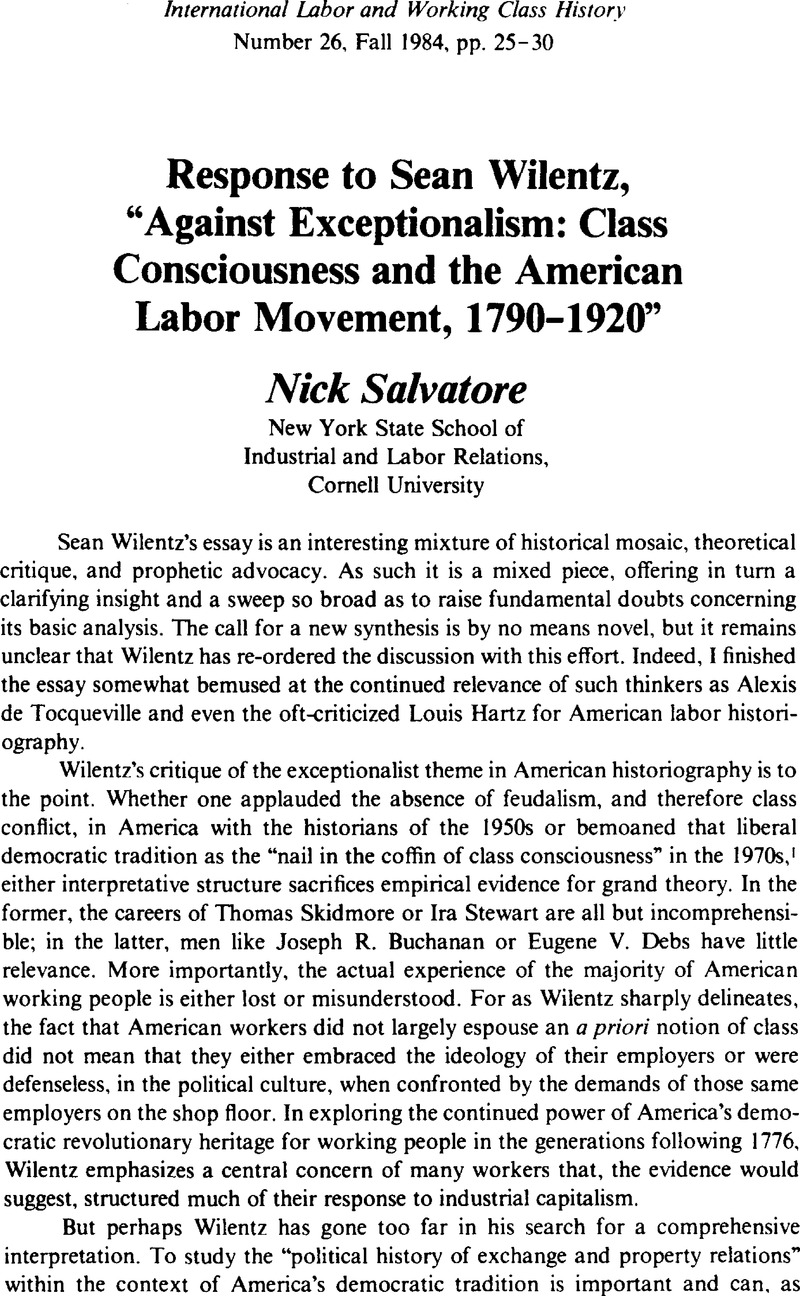Article contents
Response to Sean Wilentz,“Against Exceptionalism: Class Consciousness and the American Labor Movement, 1790–1920”
Published online by Cambridge University Press: 16 December 2008
Abstract

- Type
- Scholarly Controversies
- Information
- Copyright
- Copyright © International Labor and Working-Class History, Inc. 1984
References
1. The phrase is Dawley, Alan’s in Class and Community: The Industrial Revolution in Lynn(Cambridge, Mass., 1976).Google Scholar As Wilentz suggests, this approach is by no means limited to Dawley.
2. Rock, Howard B., Artisans of the New Republic: The Tradesmen of New York City in the Age of Jefferson (New York, 1979),183–197.Google Scholar For an early yet central statement of this corporatist philosophy, complete with a theological defense of class distinctions, seeWinthrop, John, “A Model of Christian Charity,” in Miller, Perry Johnson, Thomas A.(ed.). The Puritans: A Sourcebook of Their Writings (New York, 1963),195–199.Google Scholar
3. Quoted inKaufman, Stuart BruceSamuel Gompers and the Origins of the AFL (Westport.Ct., 1973), 86;Google Scholar on Fincher, see Commons, John R., etal.. History of Labour in the United States(New York, 1918, 2 vols.), 11, 93–94.Google Scholar
4. Quoted inReed, Louis S., The Labor Philosophy of Samuel Gompers (New York, 1930), 57.Google Scholar
5. For a fuller discussion of this theme, seemy introduction to the abridged edition of Gompers, Samuel, Seventy Years of Life and Labor (Ithaca, N.Y., 1984, forthcoming).Google Scholar
6. See Taft, Philip, The A. F. of L. in the Time of Gompers (New York, 1957), 233;Google Scholar Salvatore, Nick Debs, Eugene V.: Citizen and Socialist (Urbana, 1982), 221;Google Scholar Dubofsky, Melvyn, We Shall Be All: A History of the IWW (Chicago, 1969), 263.Google Scholar For labor force figures (including agricultural workers), seeDawson, Andrew. “The Paradox of Dynamic Technological Change and the Labor Aristocracy in the United States , 1880–1914, ” Labor History 20(Summer 1979), 328.CrossRefGoogle Scholar
7. Salvatore, Eugene V. Debs, 302.
8. Hartz, Louis, The Liberal Tradition in America (New York, 1955), 222.Google Scholar
9. Rogin, Michael Paul, The Intellectuals and McCarthy: The Radical Specter (Cambridge, Mas., 1967), ch. two.Google Scholar
- 14
- Cited by




